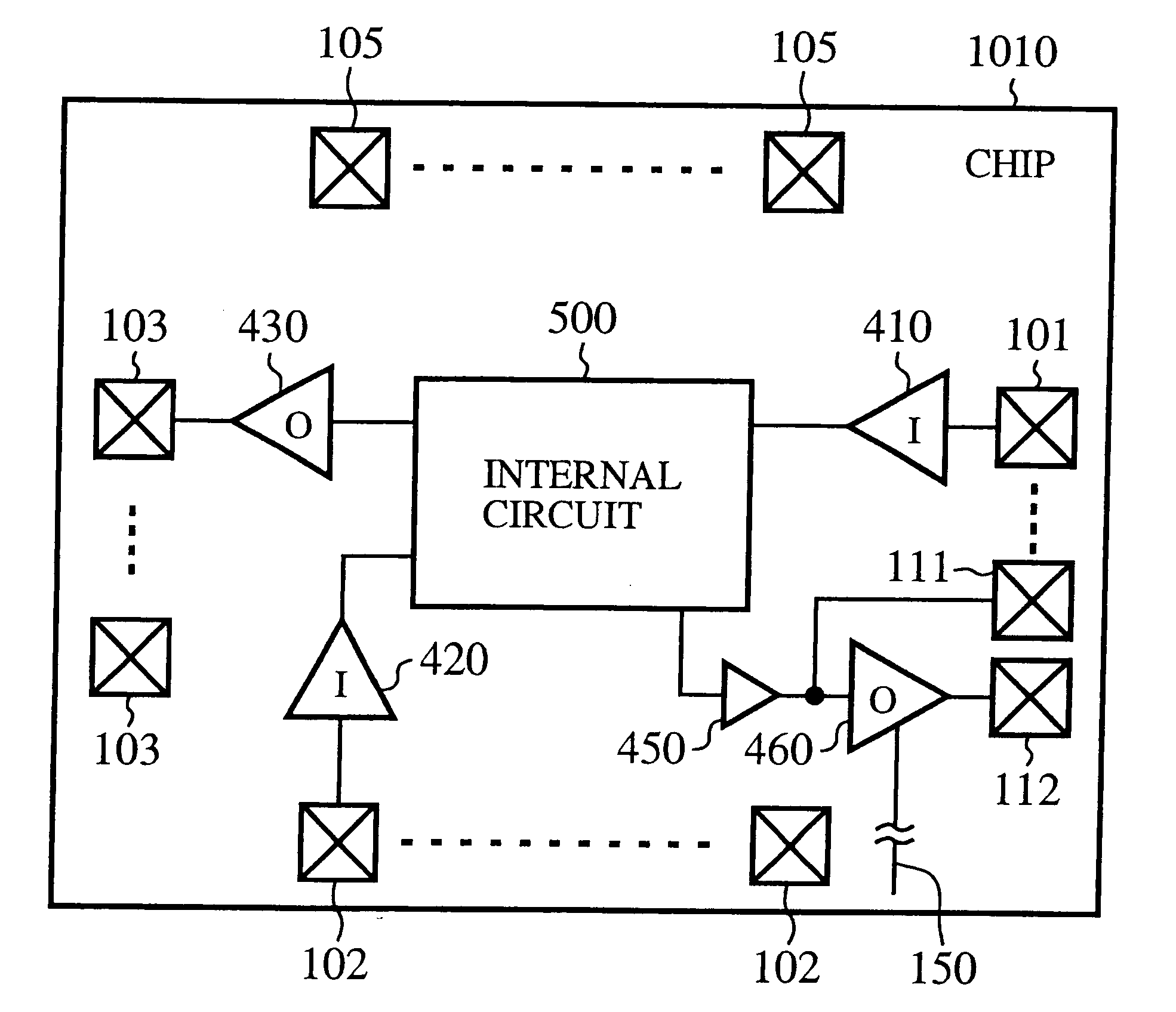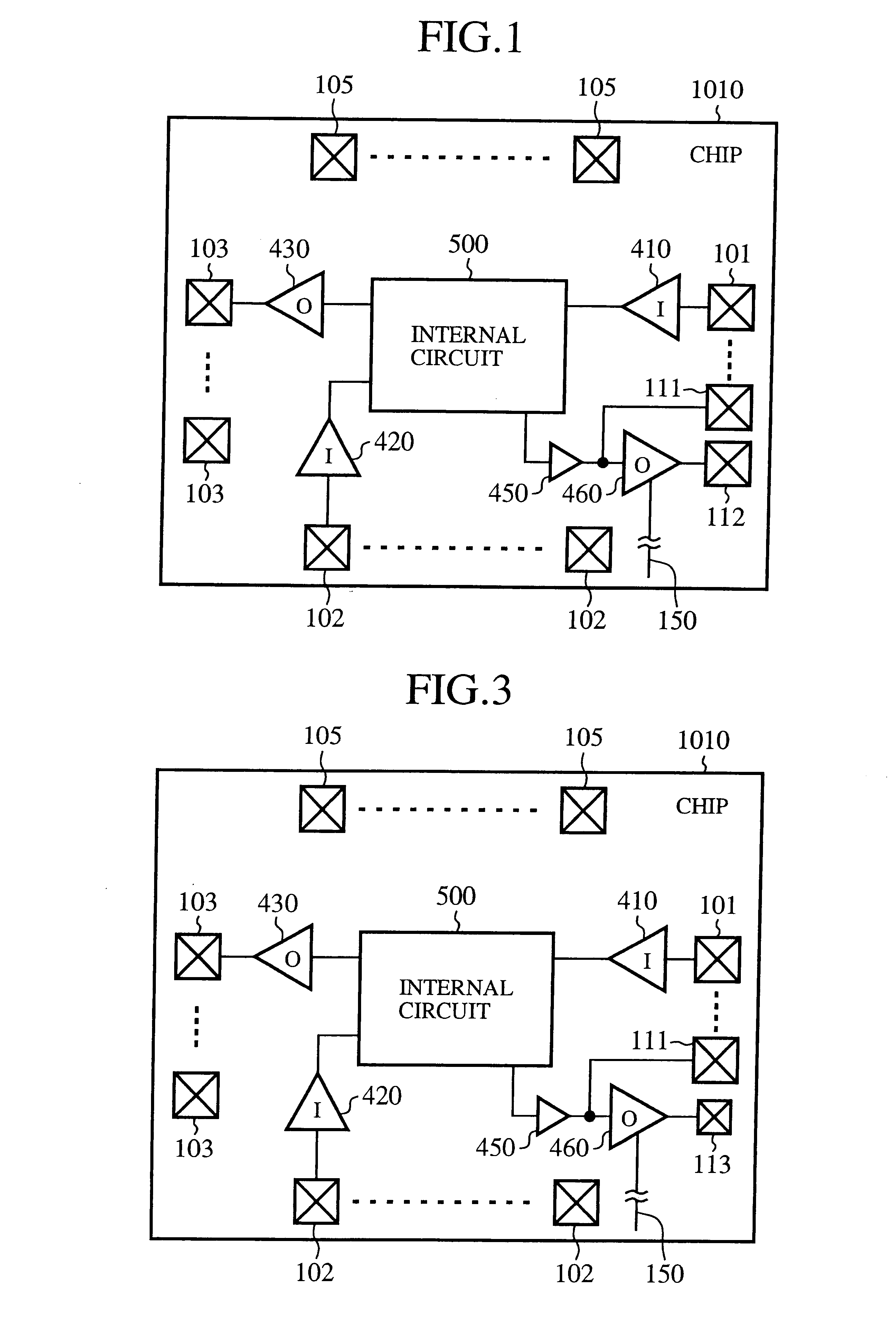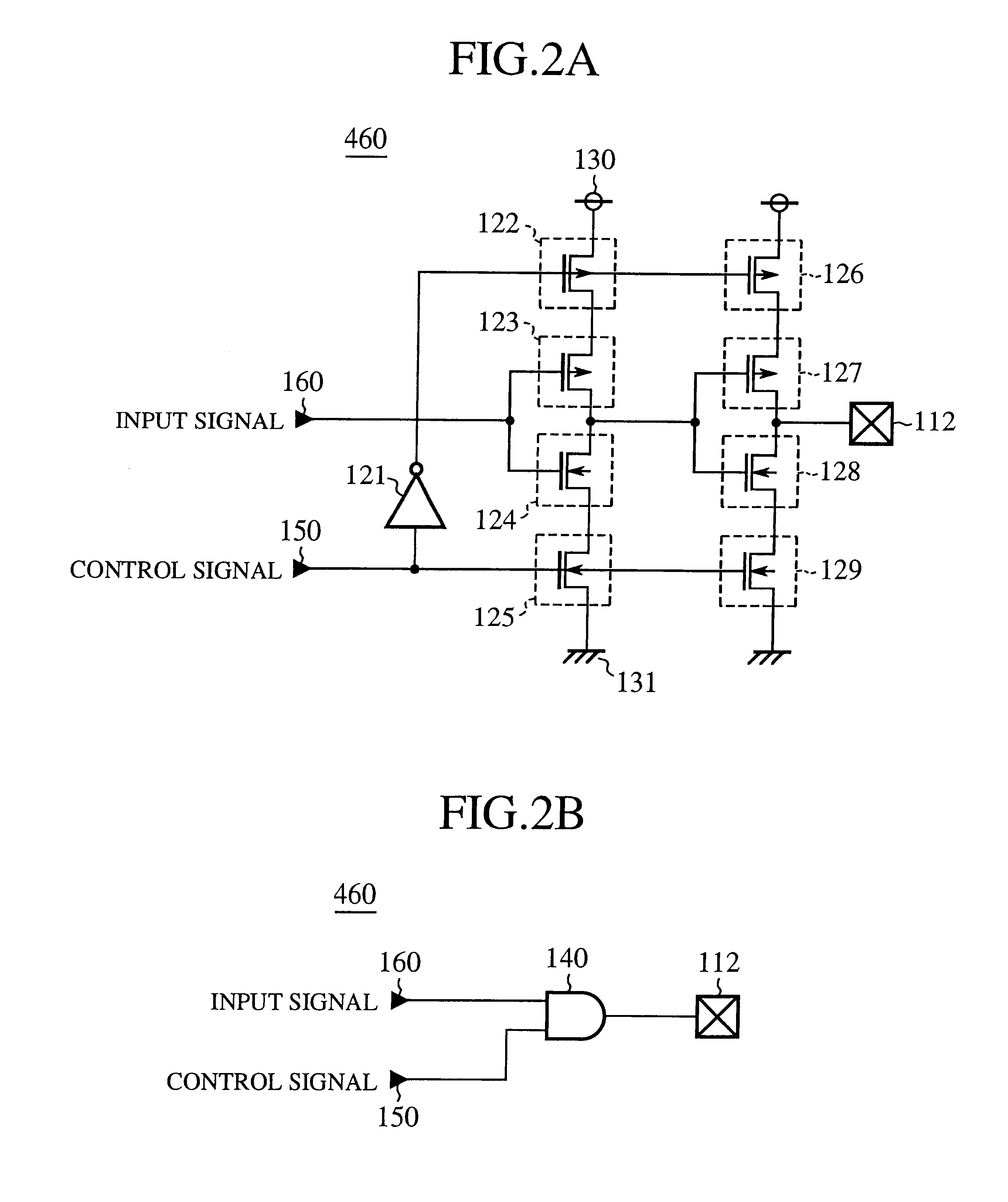Semiconductor device downsizing its built-in driver
a technology of built-in drivers and semiconductors, applied in the field of semiconductor devices, can solve the problems of affecting the optimization of mcp products, increasing current consumption by that amount, and limited countermeasures against noise generation and current consumption at the operation
- Summary
- Abstract
- Description
- Claims
- Application Information
AI Technical Summary
Benefits of technology
Problems solved by technology
Method used
Image
Examples
embodiment 1
FIG. 1 is a block diagram showing a schematic configuration of a chip (semiconductor device) to be installed in a multi-chip package of an embodiment 1 in accordance with the present invention. In FIG. 1, the reference numeral 1010 designates a chip (semiconductor device). In the chip 1010, the reference numeral 500 designates an internal circuit, reference numerals 410 and 420 each designate an input buffer for the internal circuit 500, and the reference numeral 430 designates an output buffer. Reference numerals 101-103 designate pads that are formed on the chip, and connected to the input terminals of the input buffers 410 and 420, and to the output terminal of the output buffer 430. Reference numerals 105 each designate a pad for another input or output of the internal circuit 500 (not shown for the sake of simplicity).
The chip 1010 is a first semiconductor device to be incorporated into the MCP. It has a first pad 111 to be connected to an another semiconductor device (not show...
embodiment 2
FIG. 3 is a block diagram showing a schematic configuration of a chip (semiconductor device) to be installed in the multi-chip package of an embodiment 2 in accordance with the present invention. In a chip 1011 as shown in FIG. 3, the reference numeral 500 designates an internal circuit, reference numerals 410 and 420 each designate an input buffer for the internal circuit 500, and the reference numeral 430 designates an output buffer. Reference numerals 101-103 designate pads that are formed on the chip, and connected to the input terminals of the input buffers 410 and 420 and to the output terminal of the output buffer 430. Each reference numeral 105 designates a pad for another input / output of the internal circuit 500 (not shown for the sake of simplicity).
The chip 1011 is a first semiconductor device to be incorporated into the MCP. It has a first pad 111 to be connected to an another semiconductor device and a second pad 113 for making a probing connection for a wafer test. The...
embodiment 3
FIG. 4 is a block diagram showing a schematic internal configuration of a multi-chip package of an embodiment 3 in accordance with the present invention. In FIG. 4, the reference numeral 1000 designates an MCP, and reference numerals 1010 and 1020 each designate a semiconductor device incorporated into the MCP 1000. Although the two semiconductor devices usually consist of chips with different types of functions, they may be chips of the same type. In either case, the MCP has a multi-chip structure for supplying data from a first chip to a second chip, or for exchanging data between them. The chips 1010 and 1020 built in the MCP 1000, which employs the multi-chip structure to exchange data between the two chips, have the different types of functions, and correspond to the chip described above in the embodiment 1.
In the chip 1010, the reference numeral 500 designates an internal circuit, reference numerals 410 and 420 each designate an input buffer for the internal circuit 500, and t...
PUM
 Login to View More
Login to View More Abstract
Description
Claims
Application Information
 Login to View More
Login to View More - R&D
- Intellectual Property
- Life Sciences
- Materials
- Tech Scout
- Unparalleled Data Quality
- Higher Quality Content
- 60% Fewer Hallucinations
Browse by: Latest US Patents, China's latest patents, Technical Efficacy Thesaurus, Application Domain, Technology Topic, Popular Technical Reports.
© 2025 PatSnap. All rights reserved.Legal|Privacy policy|Modern Slavery Act Transparency Statement|Sitemap|About US| Contact US: help@patsnap.com



